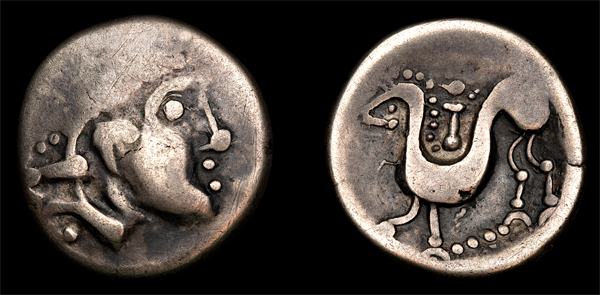
Unique ID: 89
The Velemer Tetradrachm is named after a village in modern day Hungry where a hoard containing 60 of these coins was found in March 1899. Pink (“Münzprägung der Ostkelten und Ihrer Nachbarn”) sub-divided the type into “ohne Gesichtsrand” and “mit Gesichtsrand” sub-types. “Gesichtsrand” means “face rim” and it refers to a pellet line around the neck and chin. This coin doesn’t have that, so it’s “ohne Gesichtsrand”. He subdivided the “ohne Gesichtsrand” into “Mit Kugelkranz” and “Mit Rosettenkopf” types (with spherical crown and with rosette head) which seems to refer to the head of the rider on the reverse, but I’ve never seen that used anywhere. I think this is “Mit Rosettenkopf” (rosette head).
The type is ultimately derived from Philip II of Macedon’s Tetradrachms, but the immediate predecessor is the Kroisbacher Mit Reiterstumpf type.
